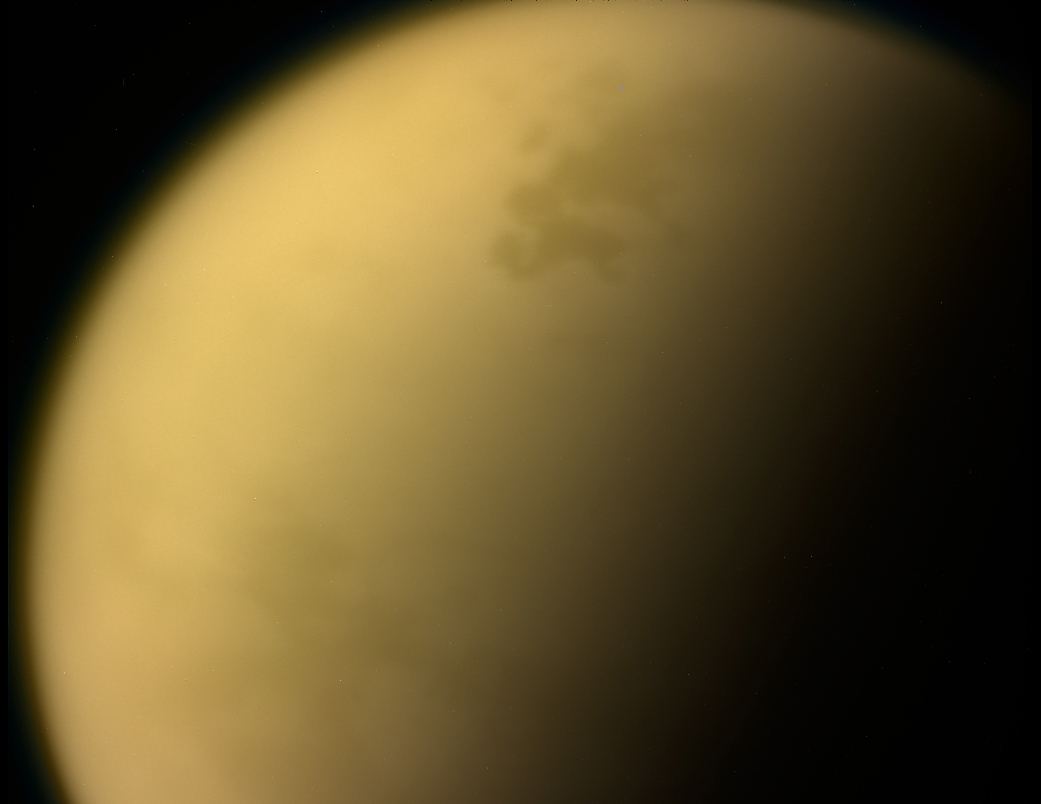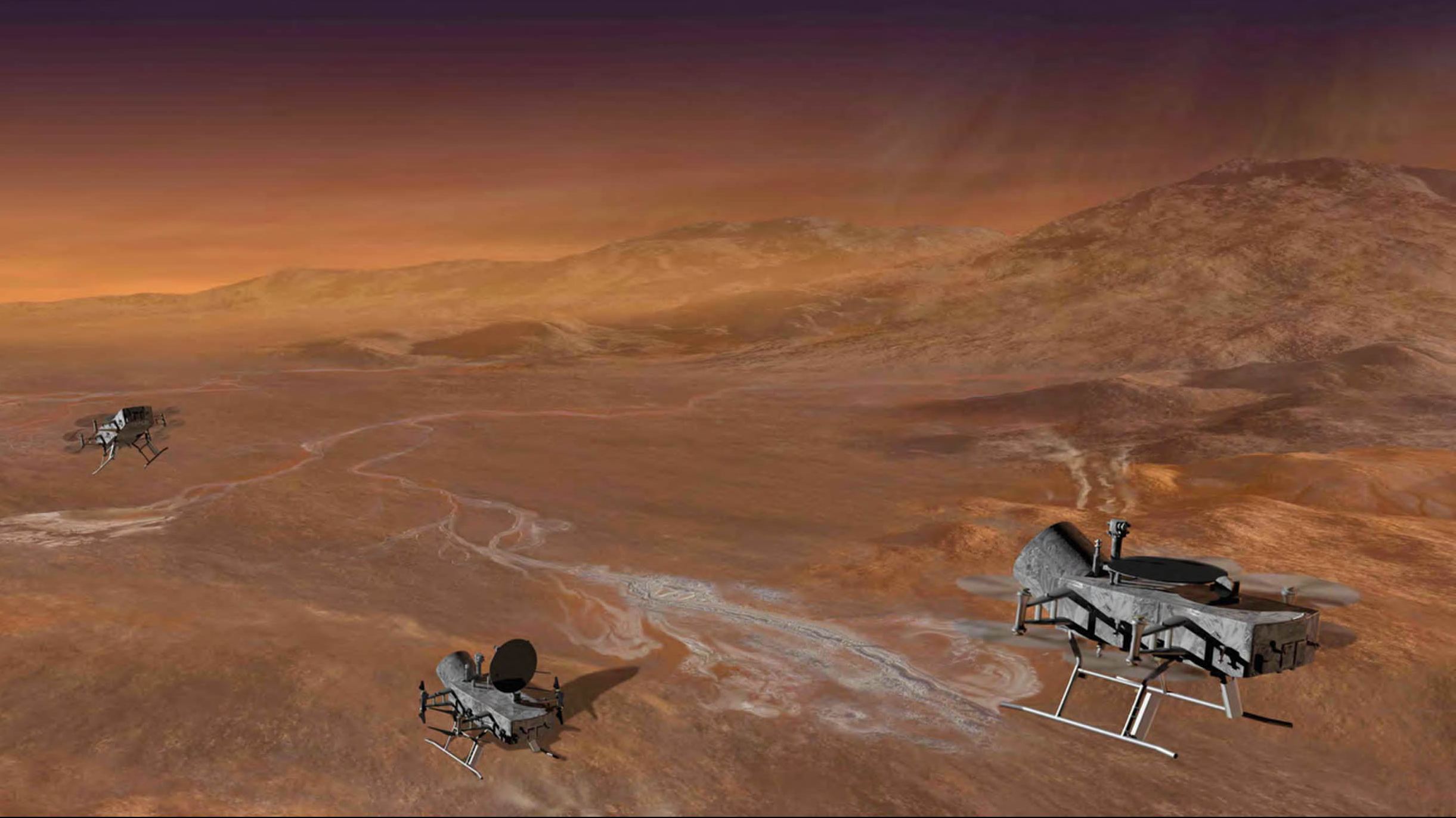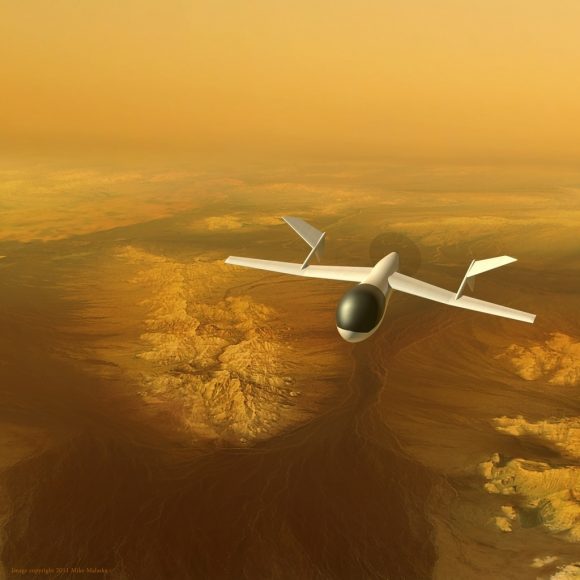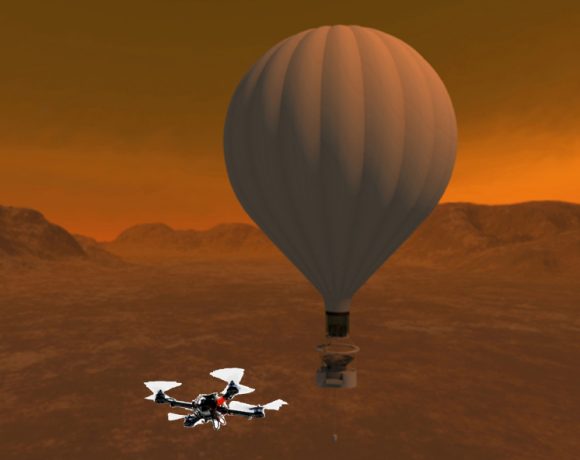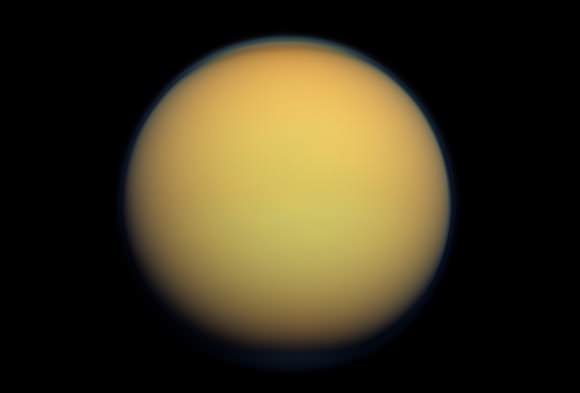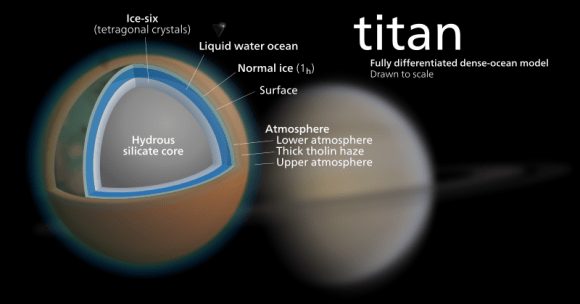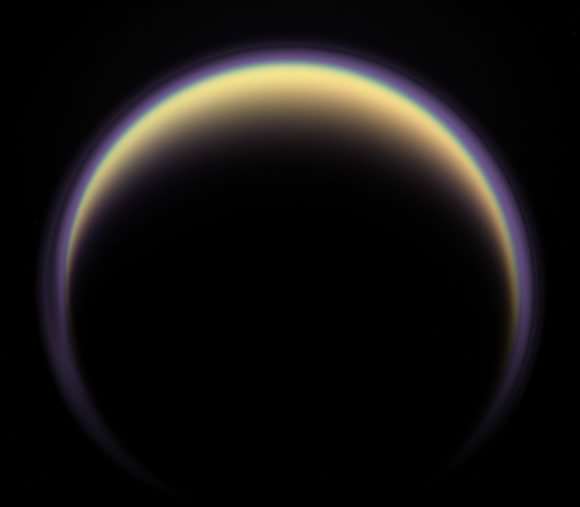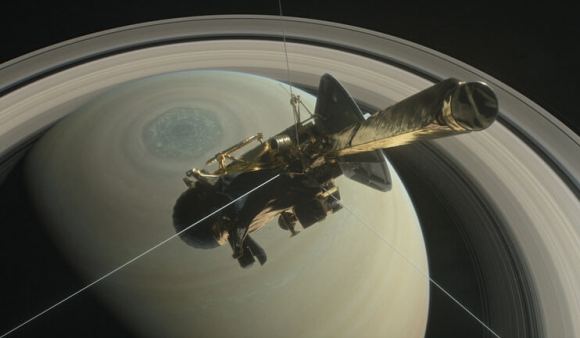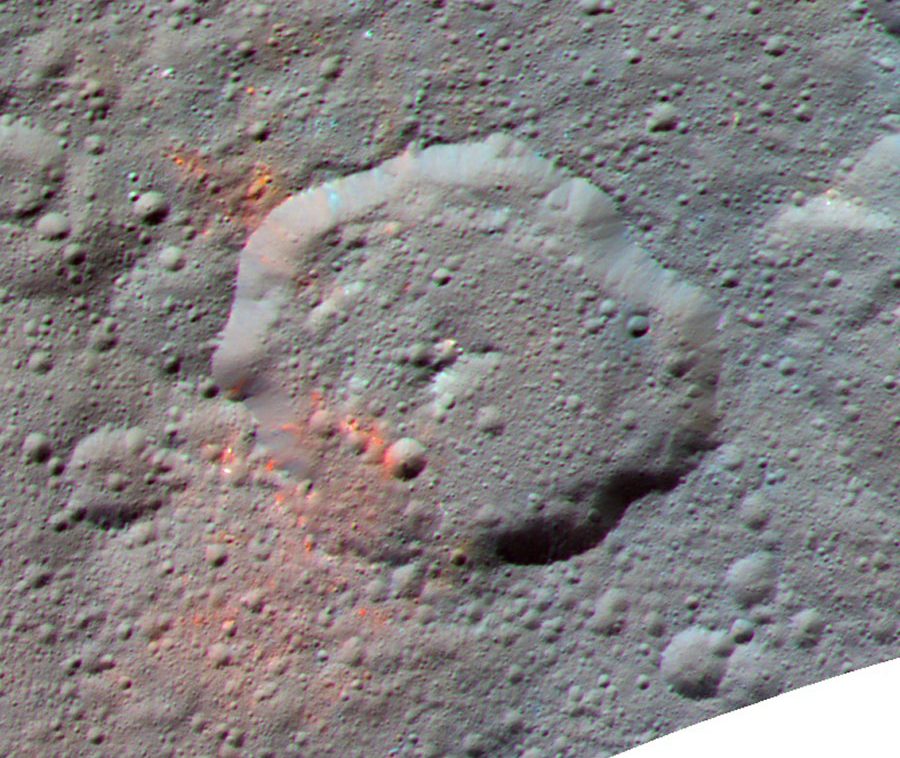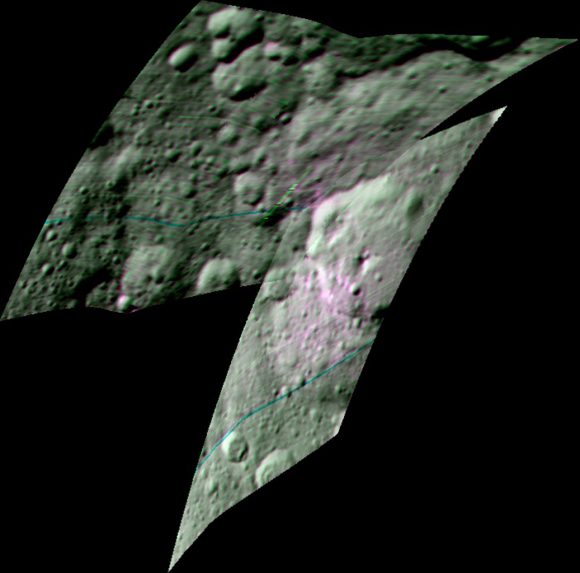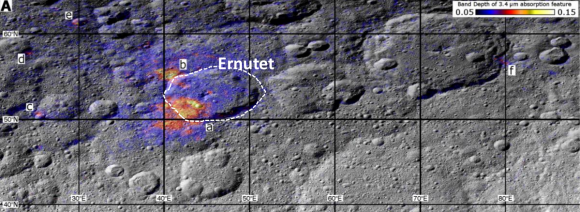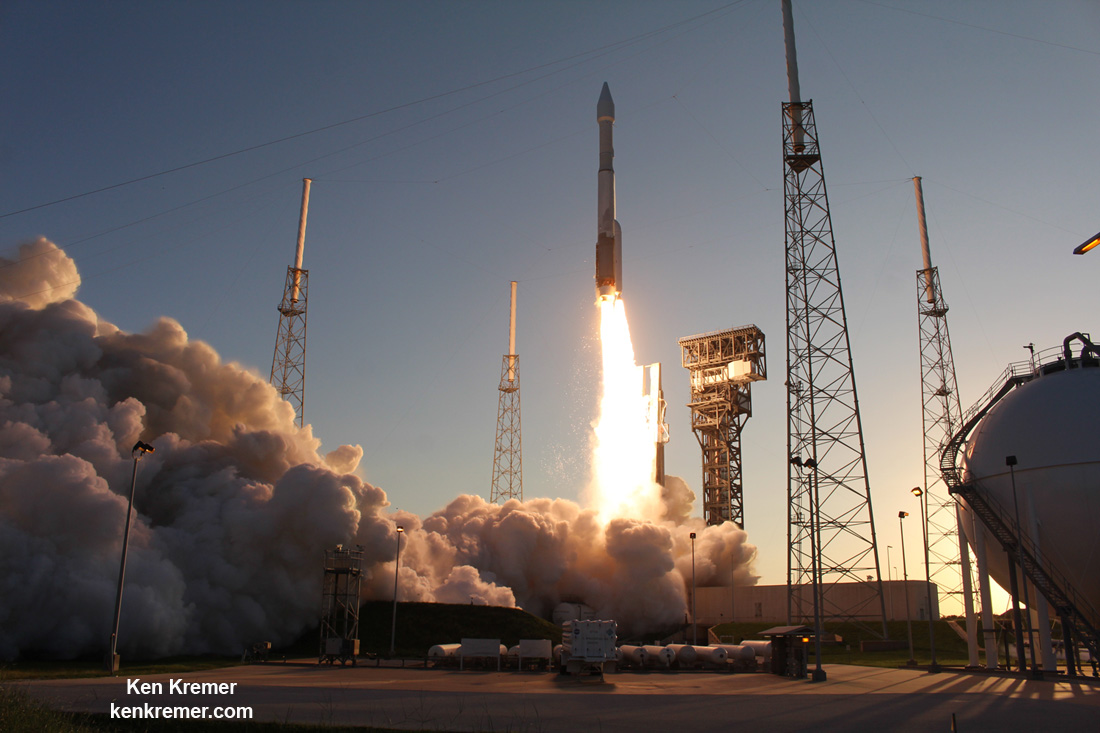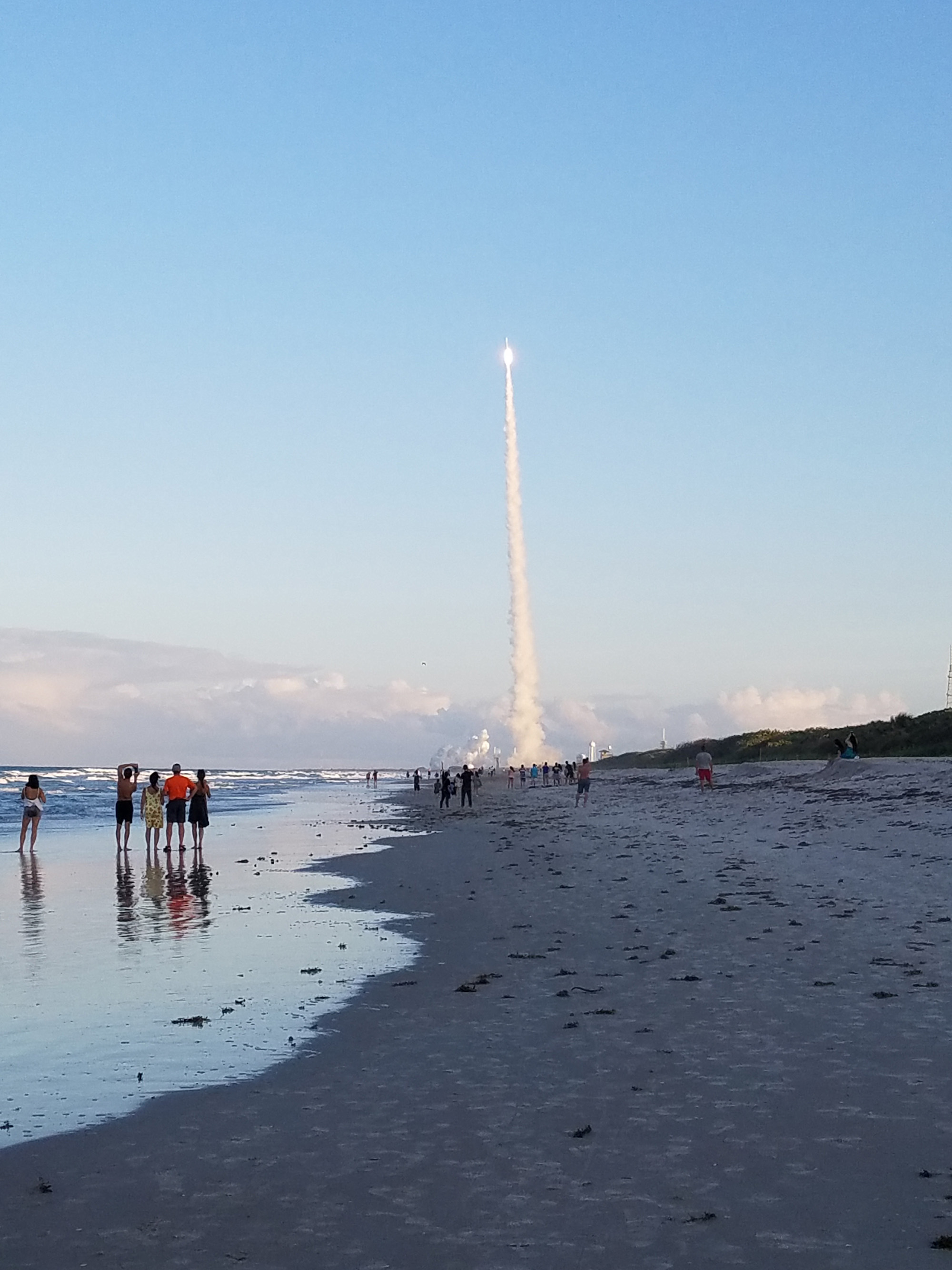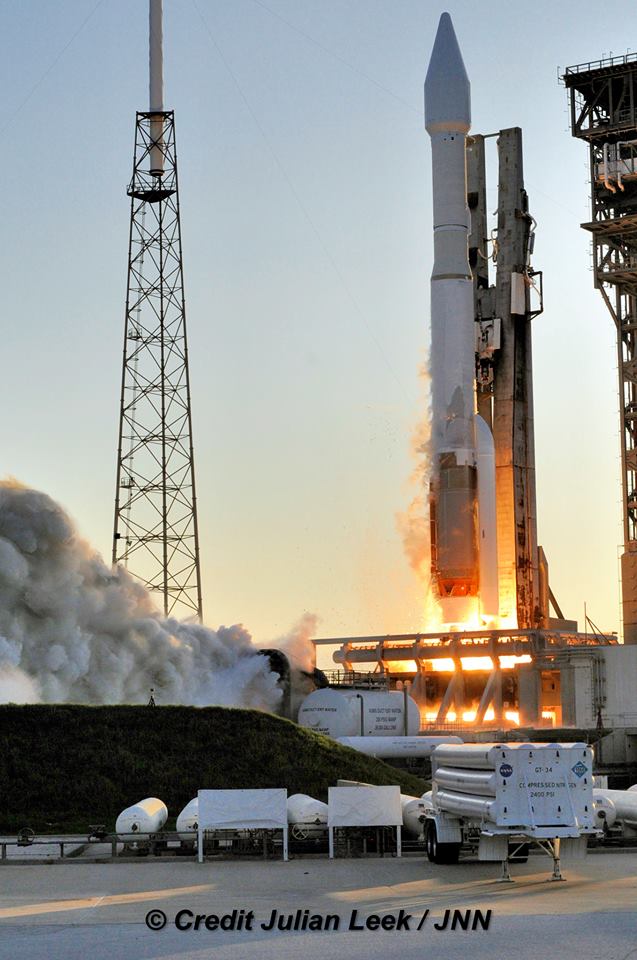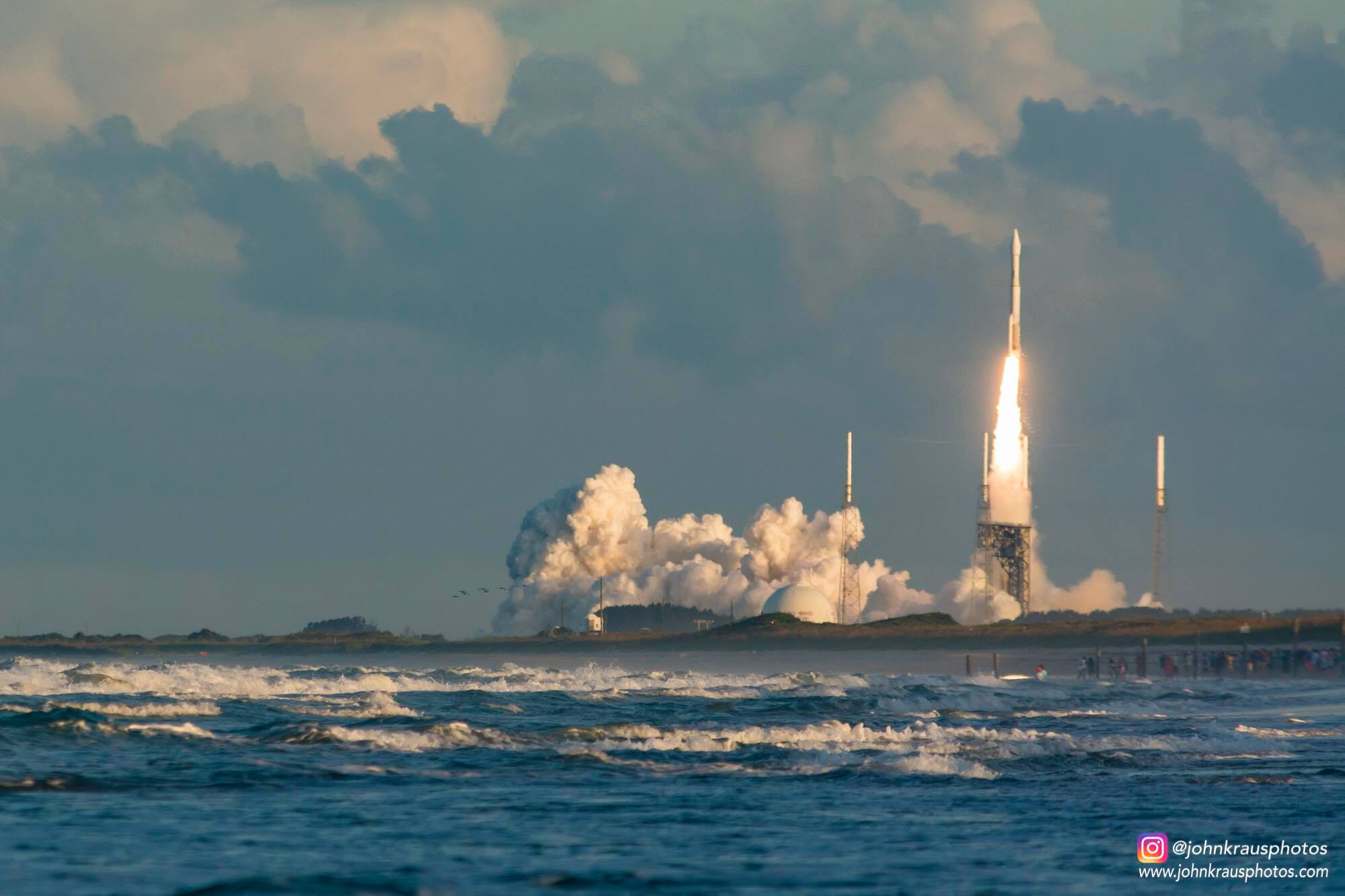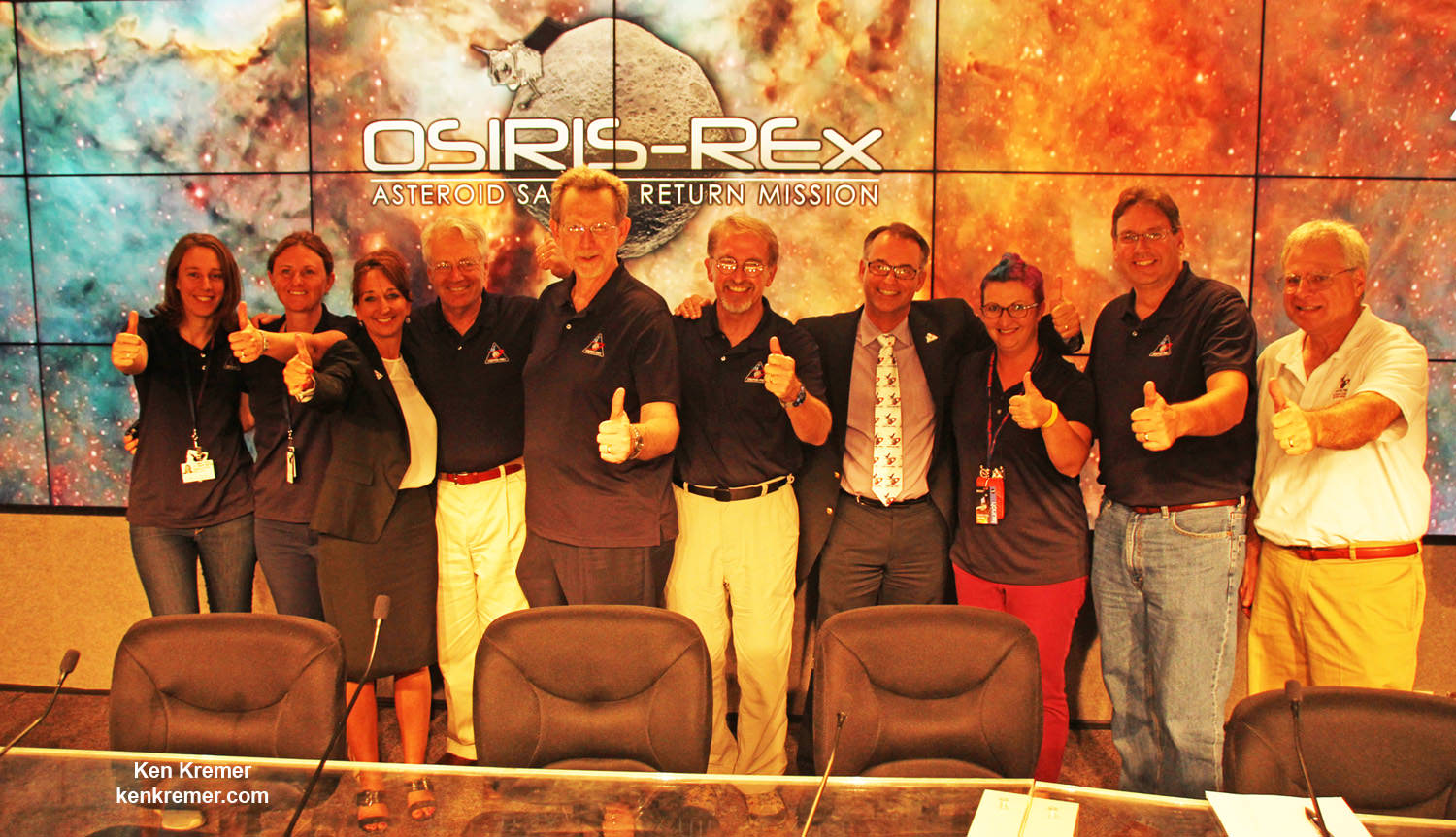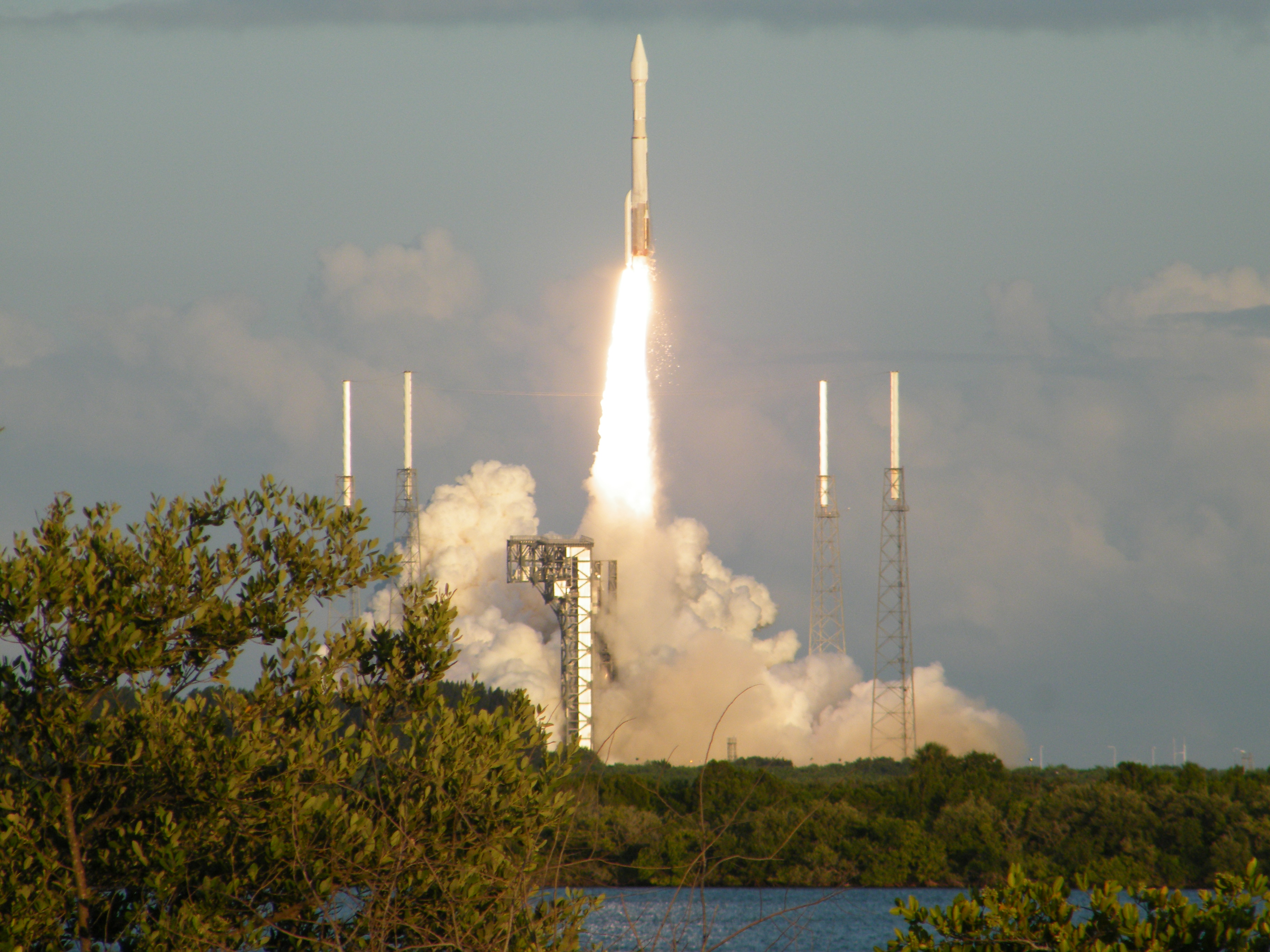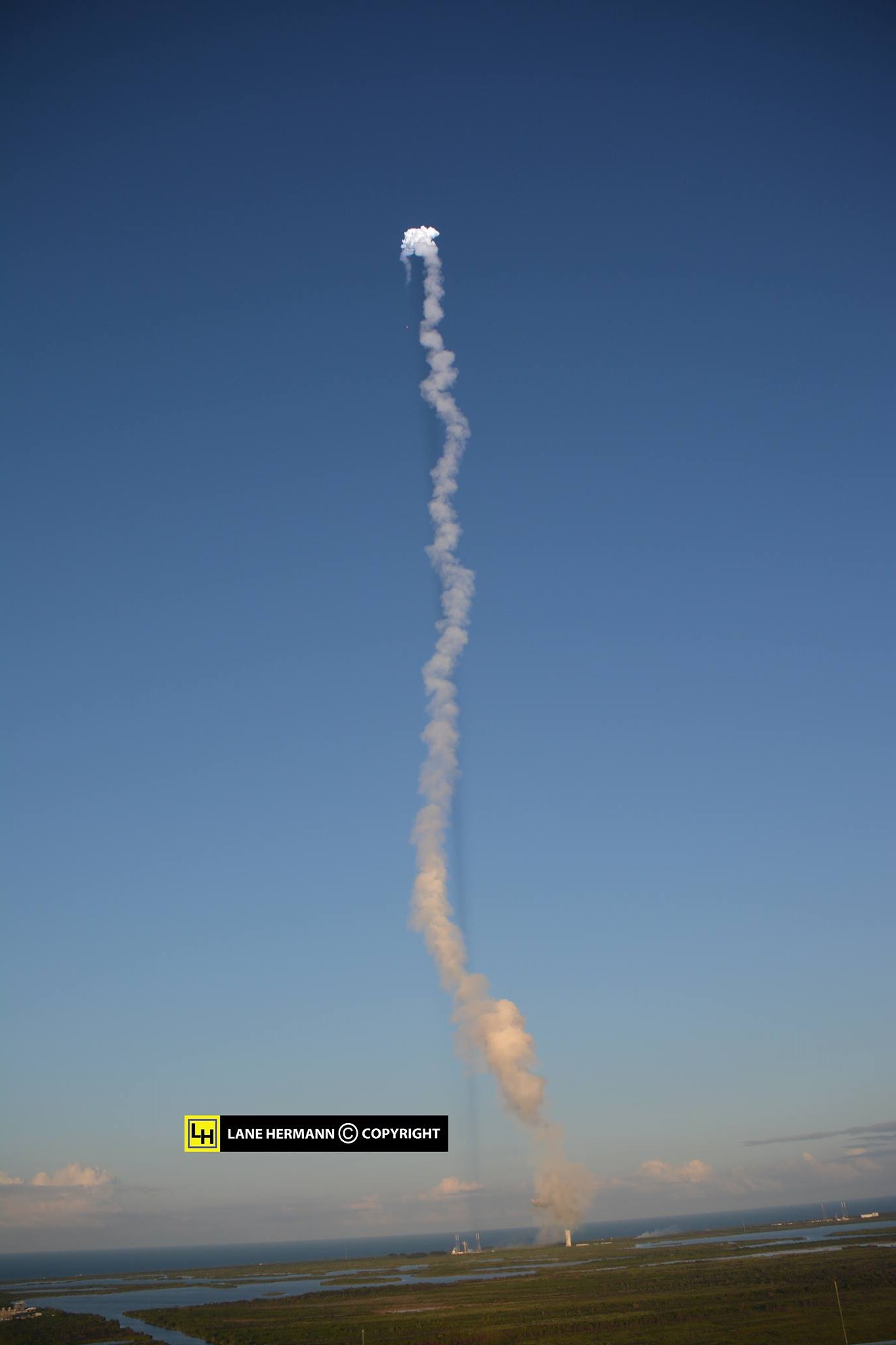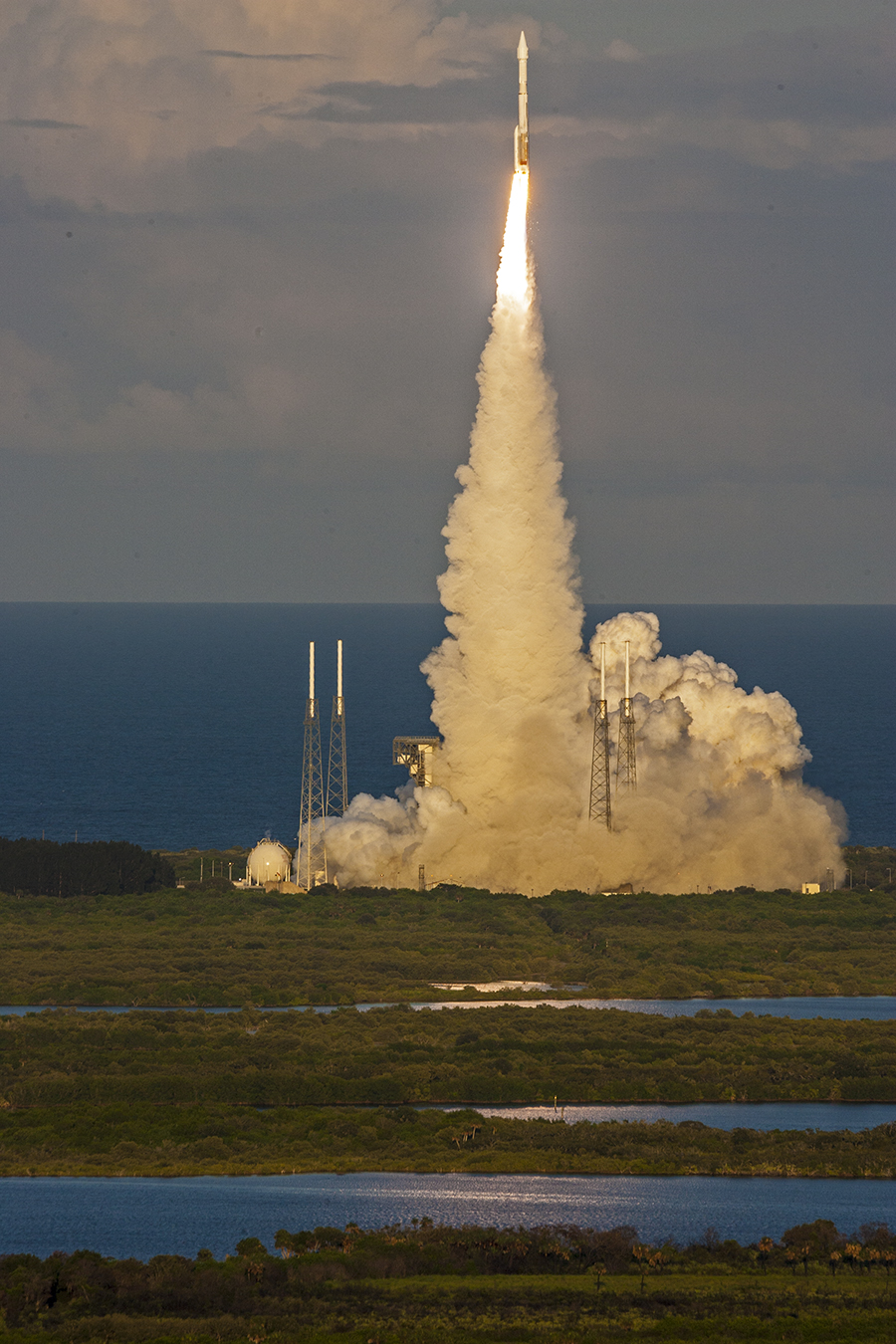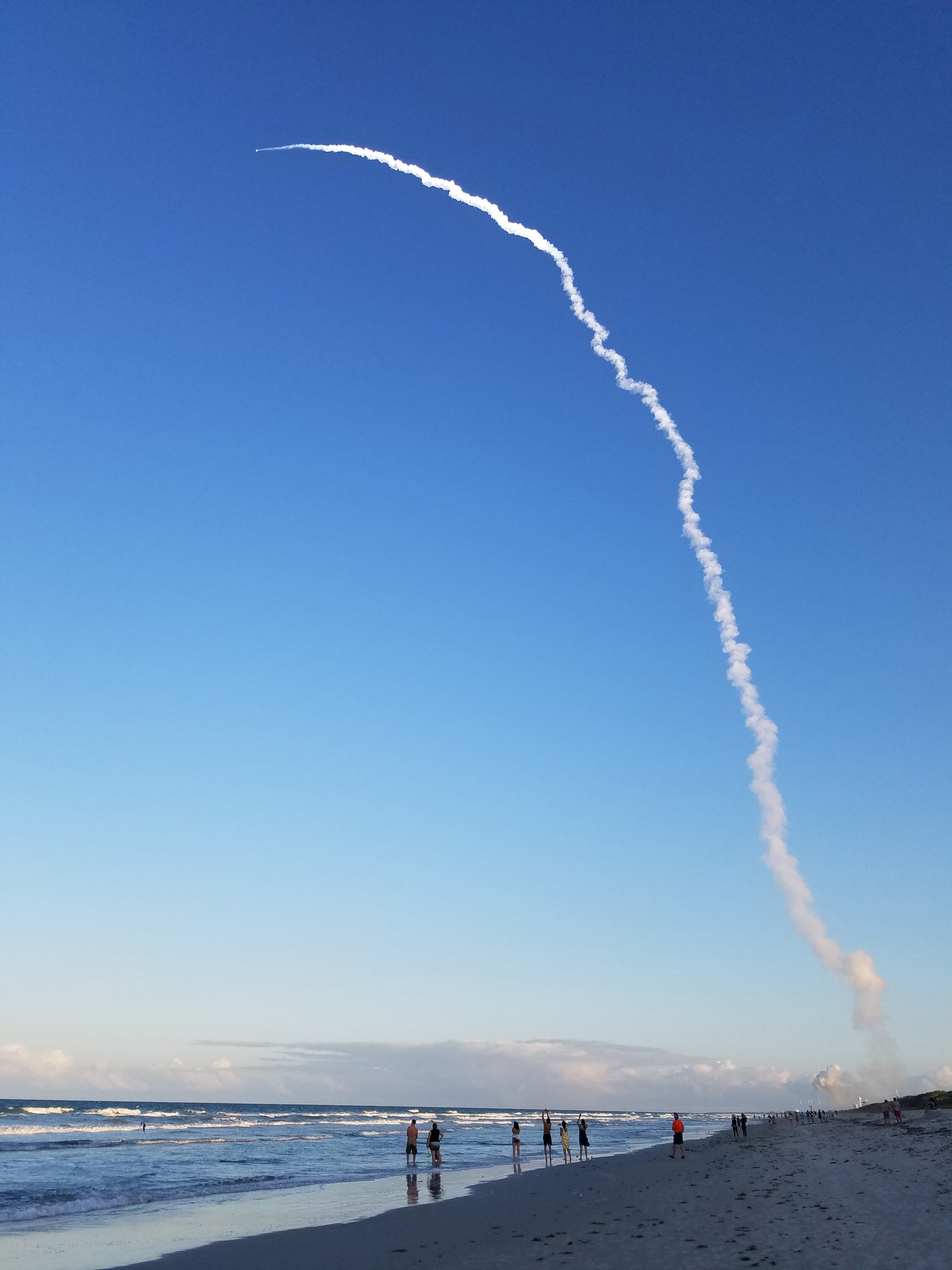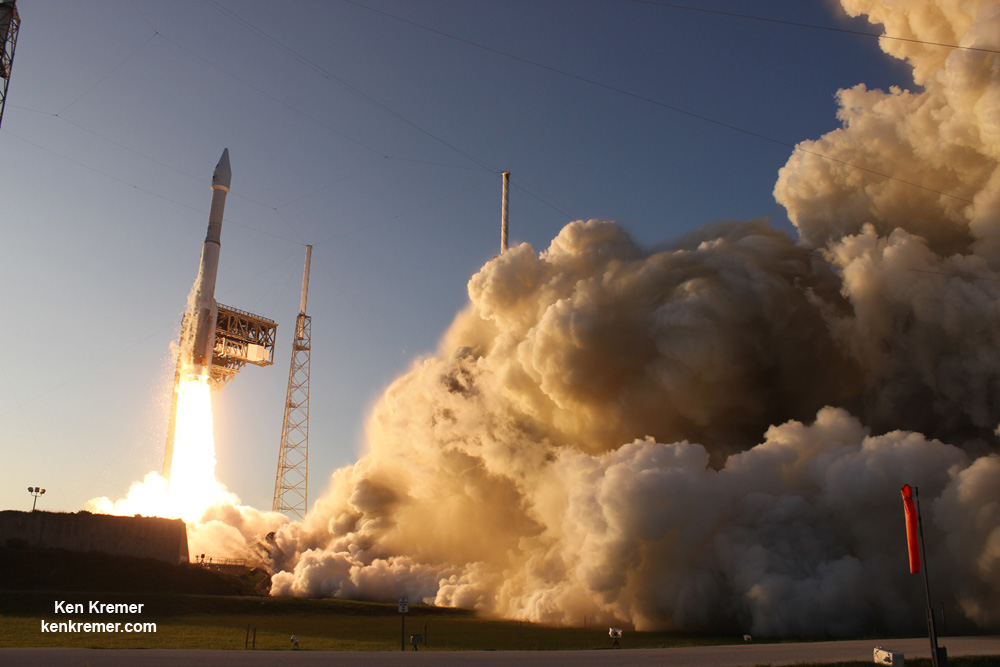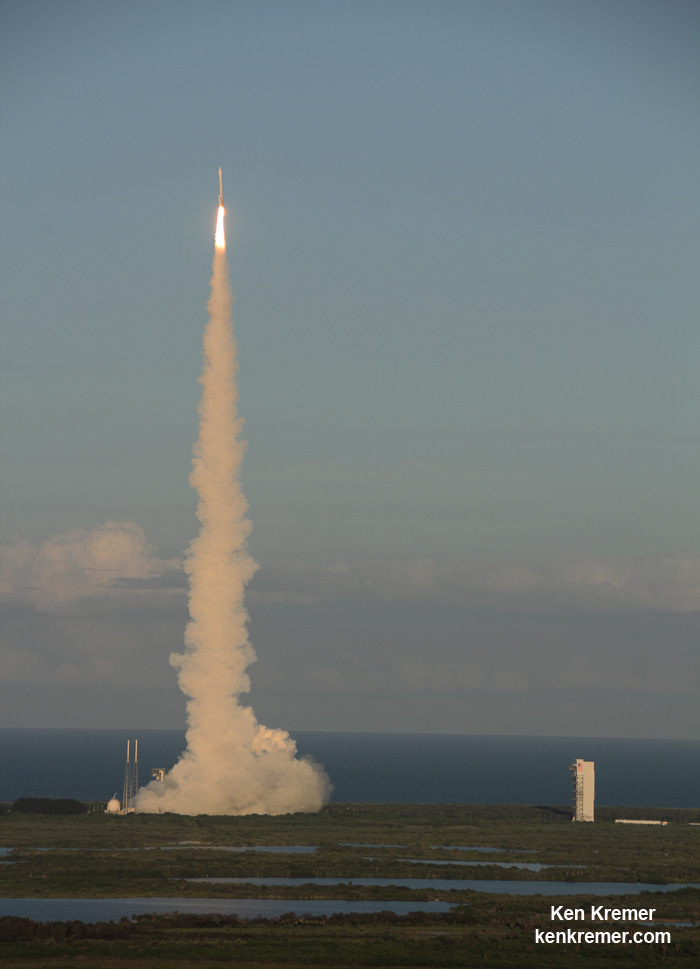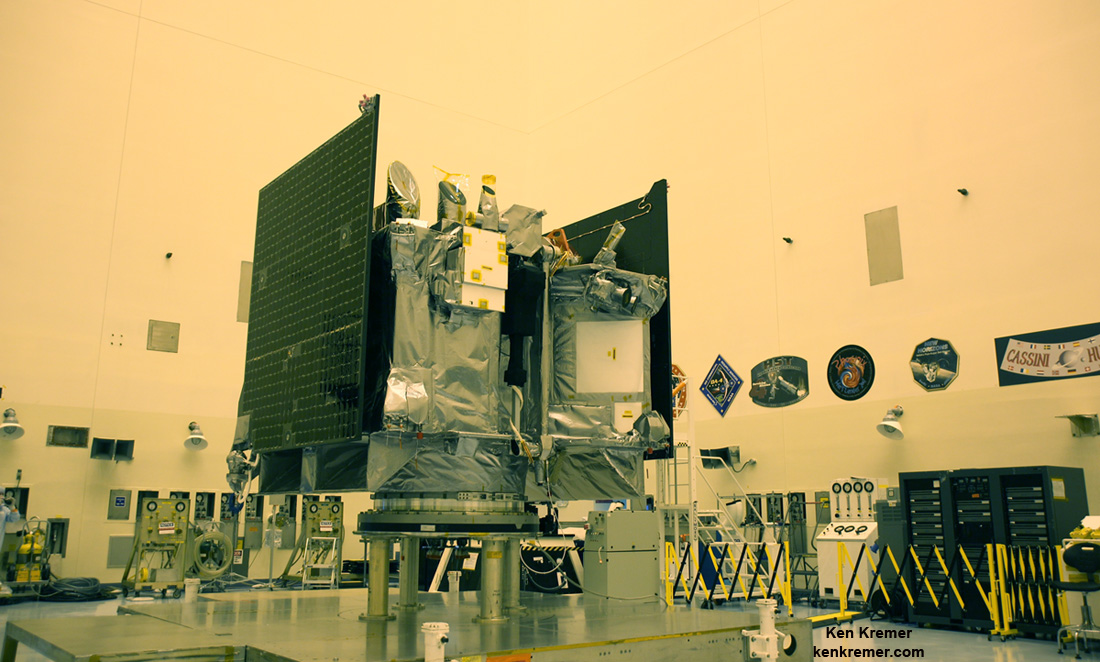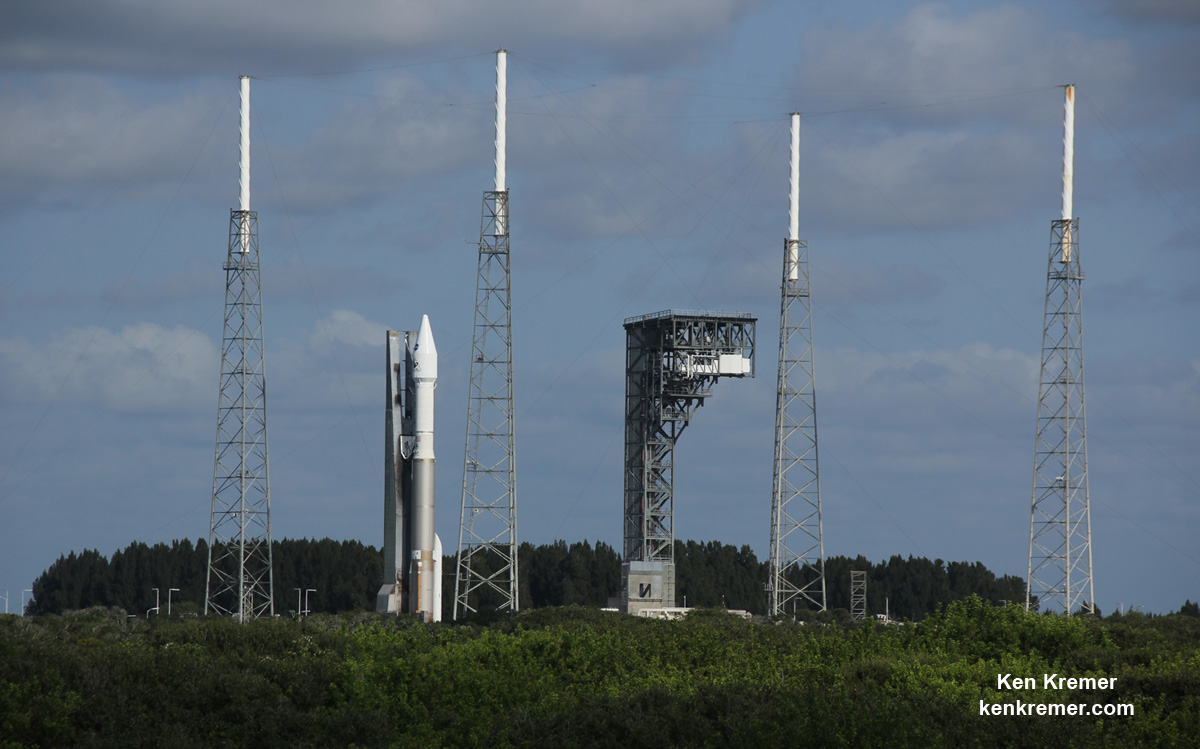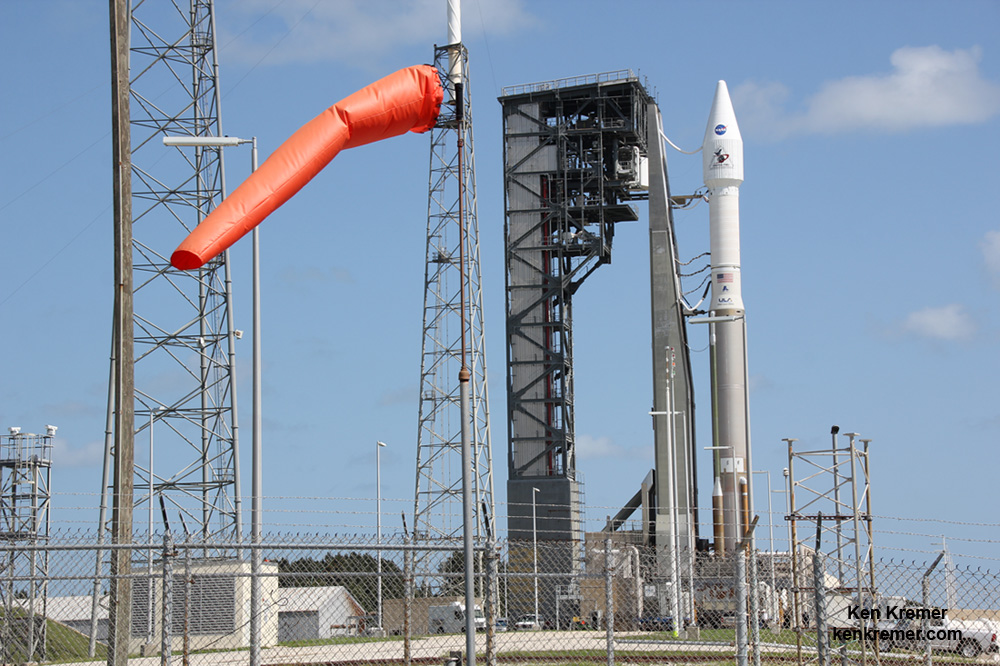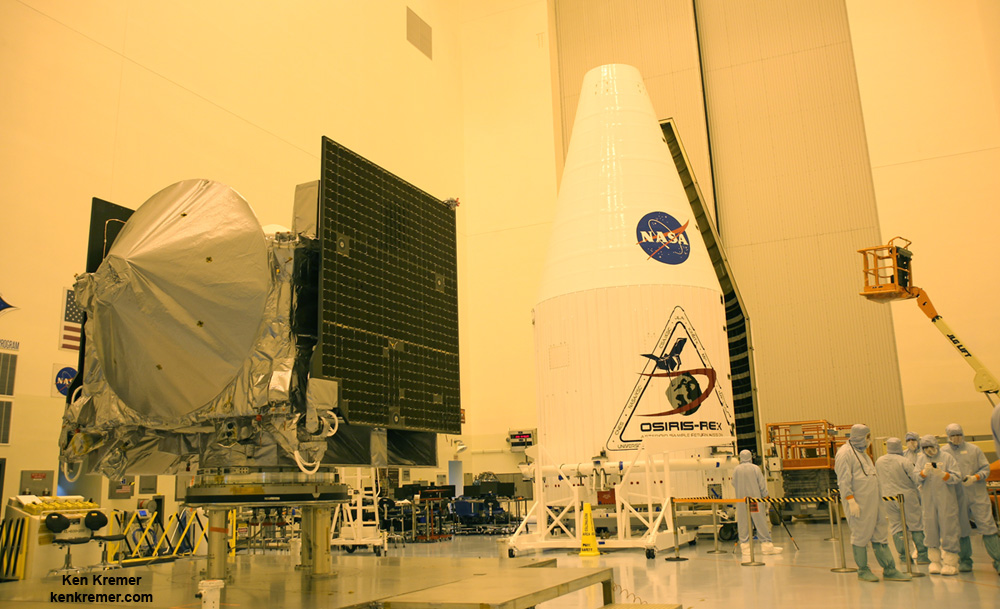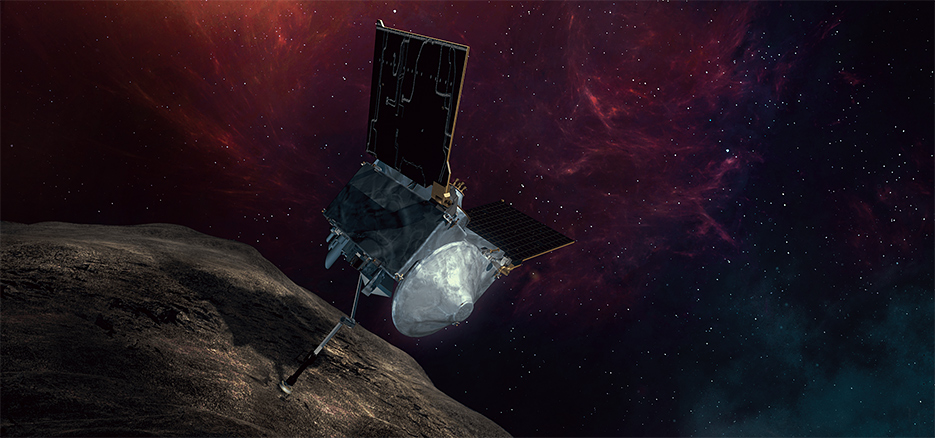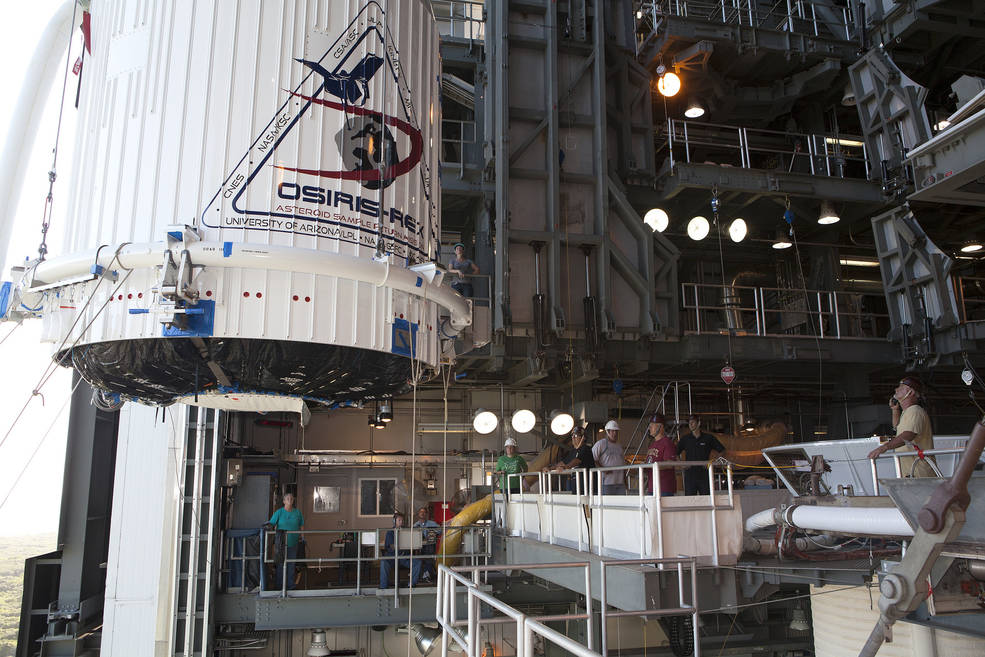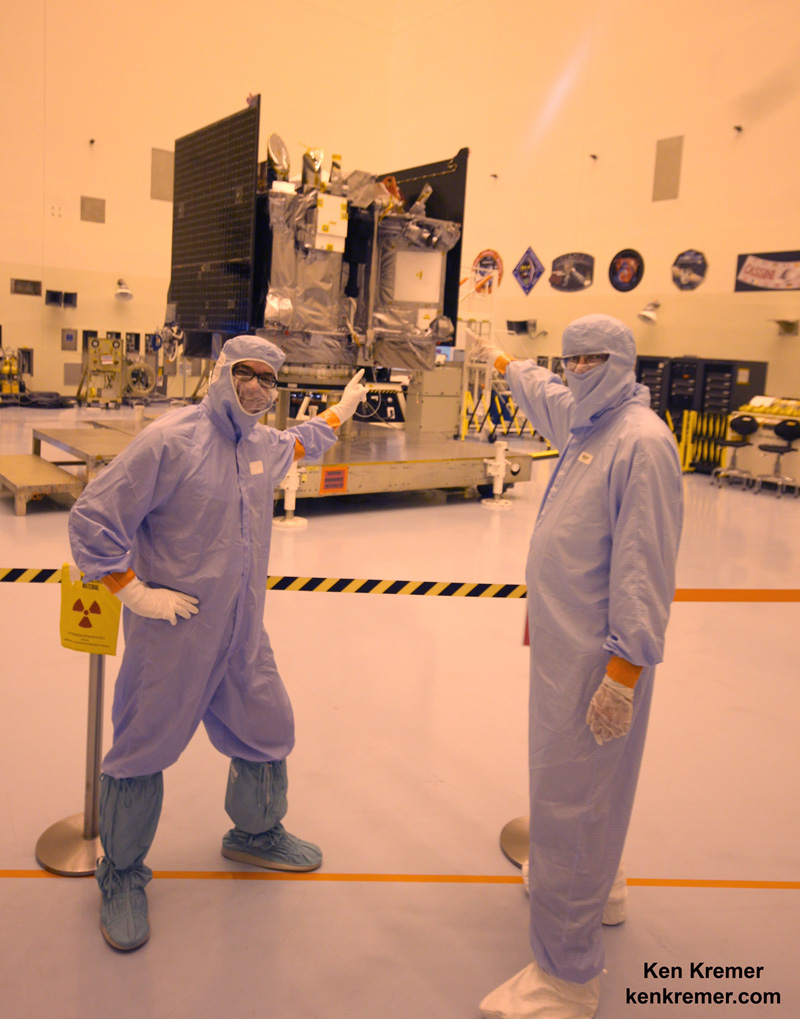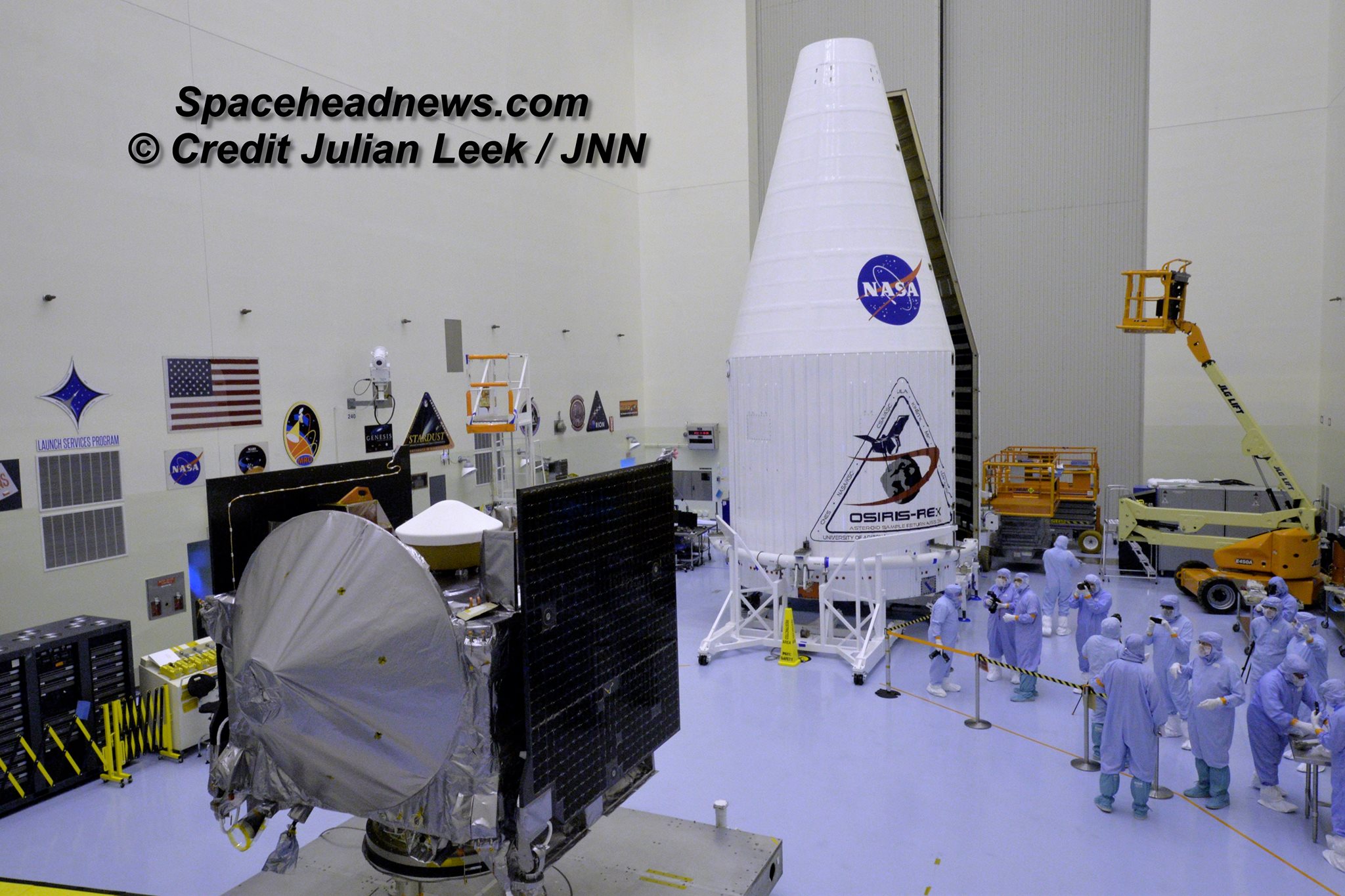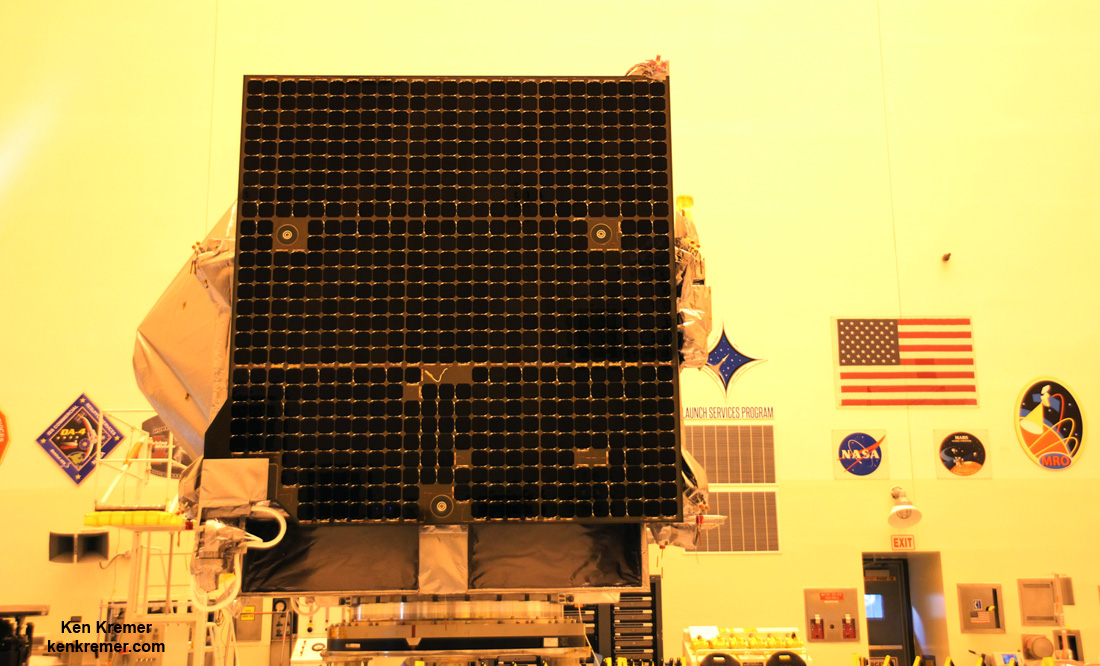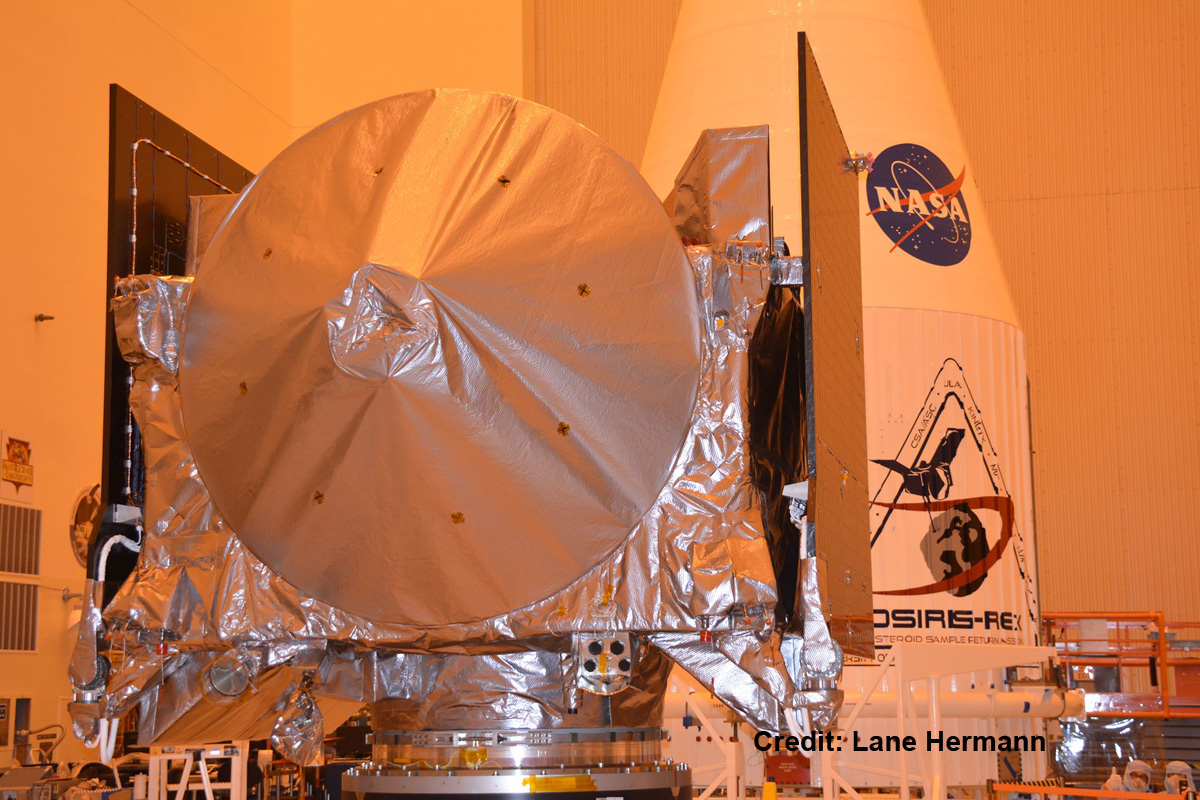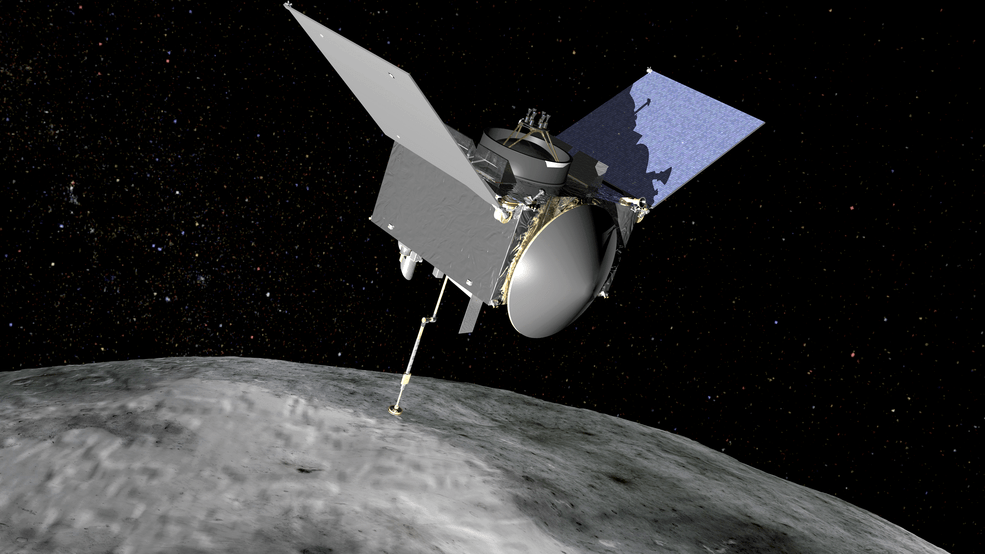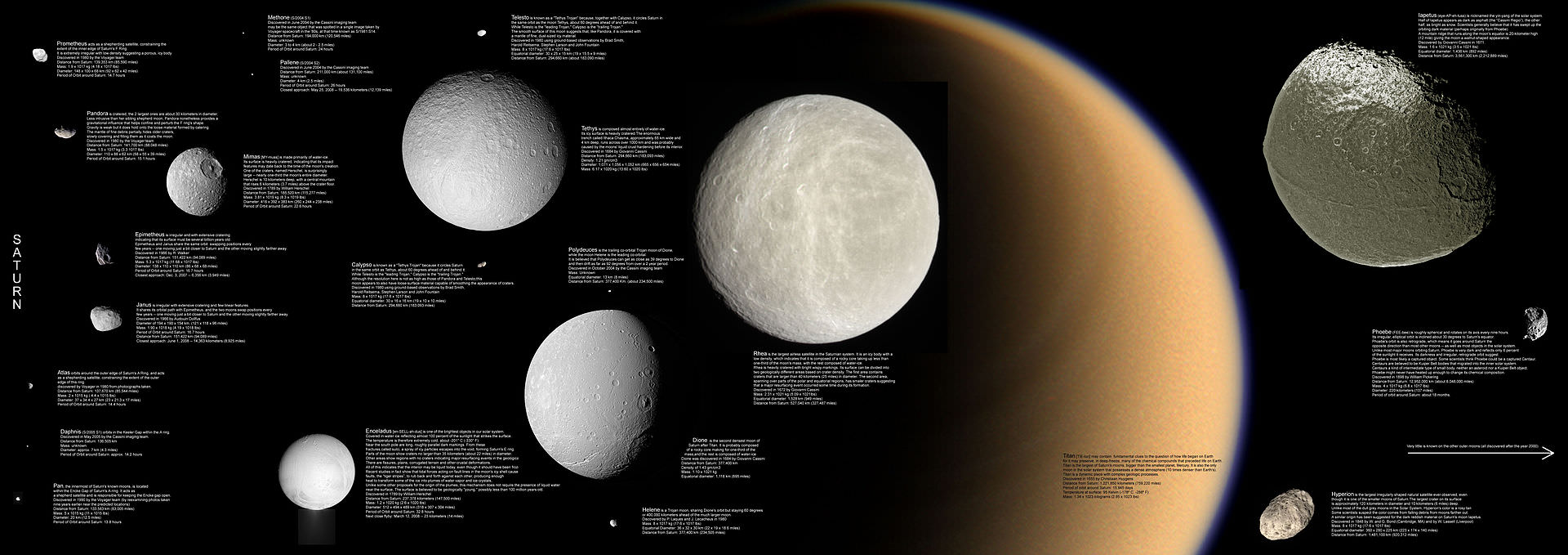During the 13 years and 76 days that the Cassini mission spent around Saturn, the orbiter and its lander (the Huygens probe) revealed a great deal about Saturn and its systems of moons. This is especially true of Titan, Saturn’s largest moon and one of the most mysterious objects in the Solar System. As a result of Cassini’s many flybys, scientists learned a great deal about Titan’s methane lakes, nitrogen-rich atmosphere, and surface features.
Even though Cassini plunged into Saturn’s atmosphere on September 15th, 2017, scientists are still pouring over the things it revealed. For instance, before it ended its mission, Cassini captured an image of a strange cloud floating high above Titan’s south pole, one which is composed of toxic, hybrid ice particles. This discovery is another indication of the complex organic chemistry occurring in Titan’s atmosphere and on it’s surface.
Since this cloud was invisible to the naked eye, it was only observable thanks to Cassini’s Composite Infrared Spectrometer (CIRS). This instrument spotted the cloud at an altitude of about 160 to 210 km (100 to 130 mi), far above the methane rain clouds of Titan’s troposphere. It also covered a large area near the south pole, between 75° and 85° south latitude.

Using the chemical fingerprint obtained by the CIRS instrument, NASA researchers also conducted laboratory experiments to reconstruct the chemical composition of the cloud. These experiments determined that the cloud was composed of the organic molecules hydrogen cyanide and benzene. These two chemicals appeared to have condensed together to form ice particles, rather than being layered on top of each other.
For those who have spent more than the past decade studying Titan’s atmosphere, this was a rather interesting and unexpected find. As Carrie Anderson, a CIRS co-investigator at NASA’s Goddard Space Flight Center, said in a recent NASA press statement:
“This cloud represents a new chemical formula of ice in Titan’s atmosphere. What’s interesting is that this noxious ice is made of two molecules that condensed together out of a rich mixture of gases at the south pole.”
The presence of this cloud around Titan’s southern pole is also another example of the moon’s global circulation patterns. This involves currents of warm gases being sent from the hemisphere that is experiencing summer to the hemisphere experience winter. This pattern reverse direction when the seasons change, which leads to a buildup of clouds around whichever pole is experiencing winter.
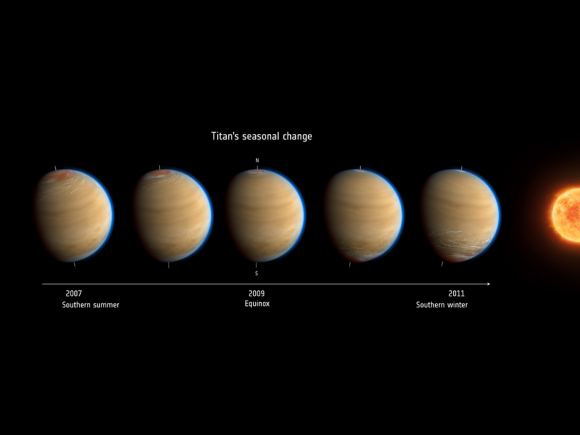
When the Cassini orbiter arrived at Saturn in 20o4, Titan’s northern hemisphere was experiencing winter – which began in 2004. This was evidenced by the buildup of clouds around its north pole, which Cassini spotted during its first encounter with the moon later than same year. Similarly, the same phenomena was taking place around the south pole near the end of Cassini’s mission.
This was consistent with seasonal changes on Titan, which take place roughly every seven Earth years – a year on Titan lasts about 29.5 Earth years. Typically, the clouds that form in Titan’s atmosphere are structured in layers, where different types of gas will condense into icy clouds at different altitudes. Which ones condense is dependent on how much vapor is present and temperatures – which become steadily colder closer to the surface.
However, at times, different types of clouds can form over a range of altitudes, or co-condense with other types of clouds. This certainly appeared to be the case when it came to the large cloud of hydrogen cyanide and benzene that was spotted above the south pole. Evidence of this cloud was derived from three sets of Titan observations made with the CIRS instrument, which took place between July and November of 2015.
The CIRS instrument works by separating infrared light into its constituent colors, and then measures the strengths of these signals at the different wavelengths to determine the presence of chemical signatures. Previously, it was used to identify the presence of hydrogen cyanide ice clouds over the south pole, as well as other toxic chemicals in the moon’s stratosphere.
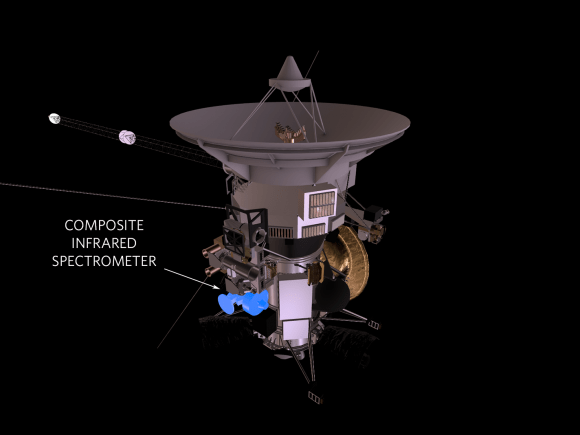
As F. Michael Flasar, the CIRS principal investigator at Goddard, said:
“CIRS acts as a remote-sensing thermometer and as a chemical probe, picking out the heat radiation emitted by individual gases in an atmosphere. And the instrument does it all remotely, while passing by a planet or moon.”
However, when examining the observation data for chemical “fingerprints”, Anderson and her colleagues noticed that the spectral signatures of the icy cloud did not match those of any individual chemical. To address this, the team began conducting laboratory experiments where mixtures of gases were condensed in a chamber that simulated conditions in Titan’s stratosphere.
After testing different pairs of chemicals, they finally found one which matched the infrared signature observed by CIRS. At first, they tried letting one gas condense before the other, but found that the best results were obtained when both gases were introduced and allowed to condense at the same time. To be fair, this was not the first time that Anderson and her colleagues had discovered co-condensed ice in CIRS data.
For example, similar observations were made near the north pole in 2005, about two years after the northern hemisphere experienced its winter solstice. At that time, the icy clouds were detected at a much lower altitude (below 150 km, or 93 mi) and showed chemical fingerprints of hydrogen cyanicide and caynoacetylene – one of the more complex organic molecules in Titan’s atmosphere.
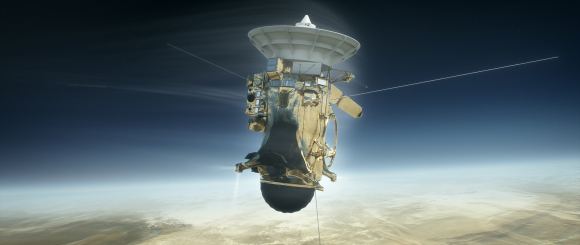
This difference between this and the latest detection of a hybrid cloud, according to Anderson, comes down to differences in seasonal variations between the north and south poles. Whereas the northern polar cloud observed in 2005 was spotted about two years after the northern winter solstice, the southern cloud Anderson and her team recently examined was spotted two years before the southern winter solstice.
In short, it is possible that the mixture of the gases was slightly different in the two case, and/or that the northern cloud had a chance to warm slightly, thus altering its composition somewhat. As Anderson explained, these observations were made possible thanks to the many years that the Cassini mission spent around Saturn:
“One of the advantages of Cassini was that we were able to flyby Titan again and again over the course of the thirteen-year mission to see changes over time. This is a big part of the value of a long-term mission.”
Additional studies will certainly be needed to determine the structure of these icy clouds of mixed composition, and Anderson and her team already have some ideas on how they would look. For their money, the researchers expect these clouds to be lumpy and disorderly, rather than well-defined crystals like the single-chemical clouds.
In the coming years, NASA scientists are sure to be spending a great deal of time and energy sorting through all the data obtained by the Cassini mission over the course of its 13-year mission. Who knows what else they will detect before they have exhausted the orbiter’s vast collections of data?
Future Reading: NASA

